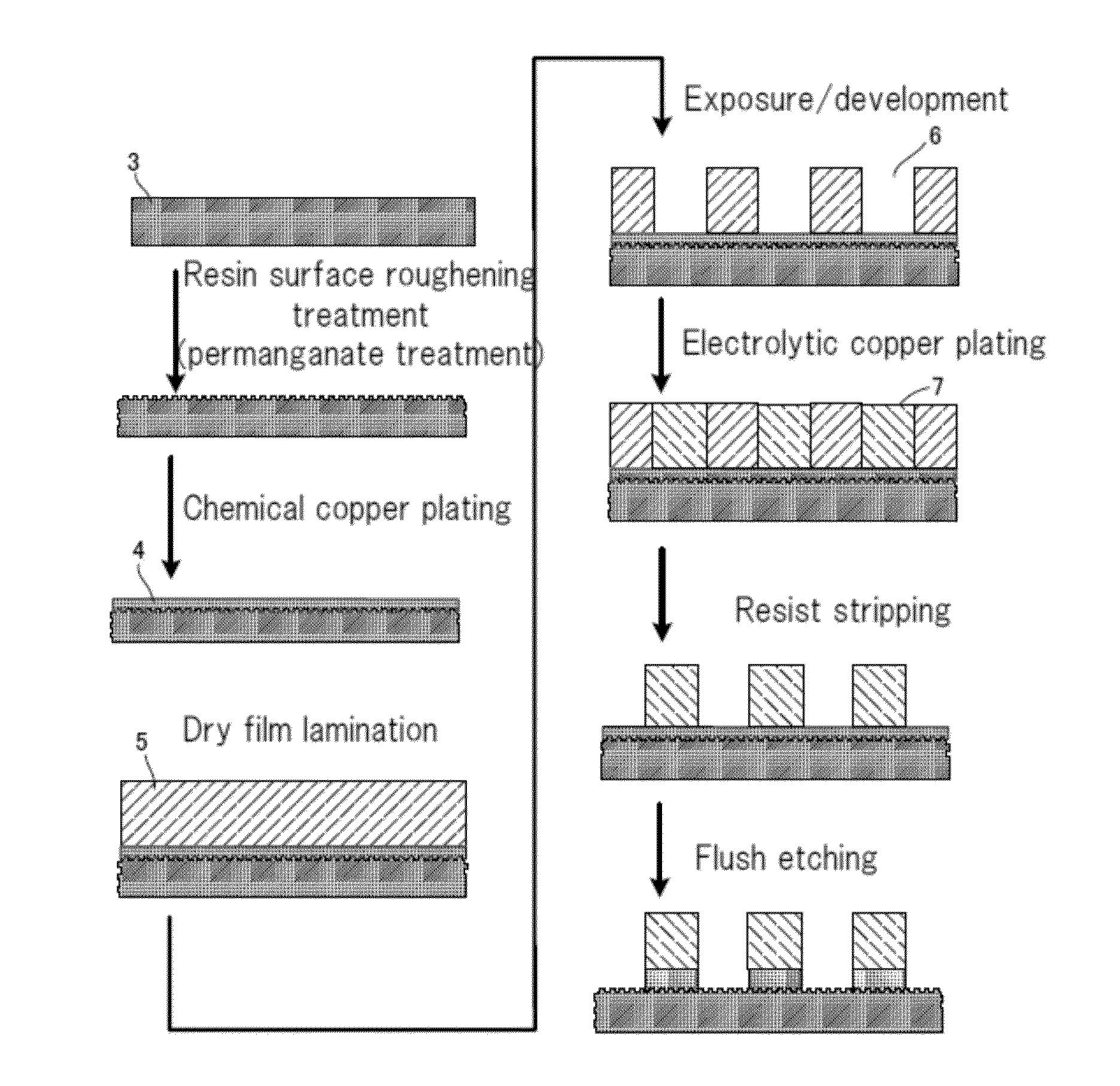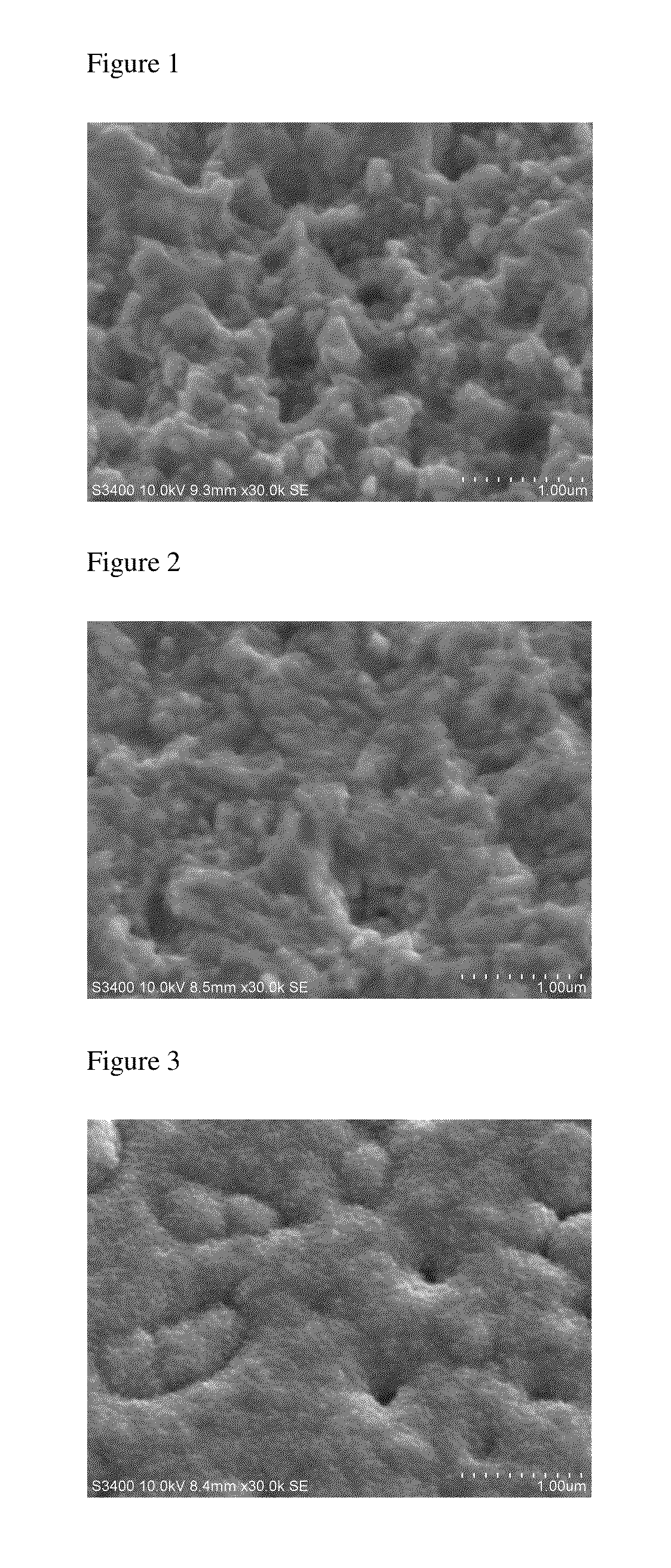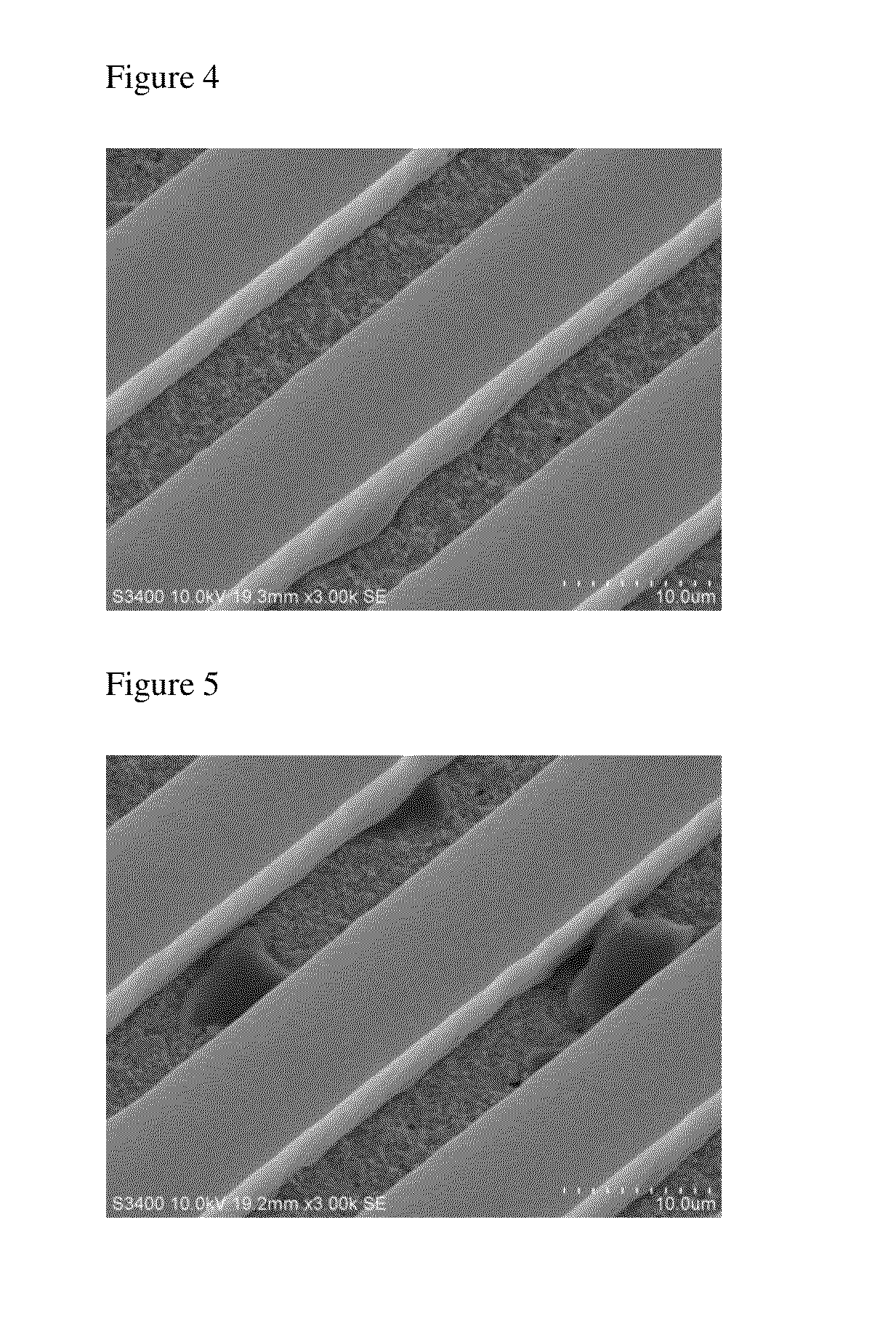Method for producing printed-wiring board
a printing and wiring board technology, applied in the direction of liquid/solution decomposition chemical coating, instruments, photomechanical equipment, etc., can solve the problems of inability to form a pattern, difficult to form a fine pattern with a wiring width of less than 10 m, and inability to obtain sufficient adhesion, etc., to achieve low etching amount, low roughness degree, and fine unevenness roughening
- Summary
- Abstract
- Description
- Claims
- Application Information
AI Technical Summary
Benefits of technology
Problems solved by technology
Method used
Image
Examples
example 1
[0062]
[0063]A substrate of chemical copper plating (size: 15 cm×15 cm, thickness of plating: 0.5 μm) was subjected to a spray treatment at a liquid temperature of 30° C. and a spray pressure of 0.1 MPa for 30 seconds using an etching solution prepared with 0.3% by mass of hydrogen peroxide, 1.5% by mass of sulfuric acid, 0.1% by mass of 5-methyltetrazole, 1 ppm of chloride ion and the remaining amount of water. As a result, the amount of dissolution of copper was 0.2 μm. The specific amount of dissolution of copper was calculated from the difference in mass of the substrate before and after the roughening treatment.
[0064]Next, with respect to the surface of chemical copper plating after etching, the surface area in an area of 5 μm×5 μm was measured using a scanning tunneling microscope (30,000x). As a result, the surface area of the chemical copper plating was 38 [μm2]. The specific surface area was 38 [μm2] / 25 [μm2]=1.52. Further, the copper surface roughness (Ra) was 0.17 μm. An e...
example 2
[0067] and were carried out in manners similar to those in Example 1, except that an etching solution was prepared with 0.5% by mass of hydrogen peroxide, 2.5% by mass of sulfuric acid, 0.05% by mass of 5-aminotetrazole, 0.05% by mass of 1,5-dimethyltetrazole, 1 ppm of chloride ion and the remaining amount of water. The surface area of the chemical copper plating was 40 [μm2]. The specific surface area was 1.60. The copper surface roughness (Ra) was 0.20 μm. The evaluation result regarding the adhesion of the dry film is shown in Table 1, and the evaluation result regarding the dry film stripping property is shown in Table 2.
example 3
[0068] and were carried out in manners similar to those in Example 1, except that an etching solution was prepared with 0.4% by mass of hydrogen peroxide, 2% by mass of sulfuric acid, 0.05% by mass of 1H-tetrazole, 0.03% by mass of 5-mercapto-1-methyltetrazole, 1 ppm of chloride ion and the remaining amount of water. The surface area of the chemical copper plating was 37 [μm2]. The specific surface area was 1.48. The copper surface roughness (Ra) was 0.19 μm. The evaluation result regarding the adhesion of the dry film is shown in Table 1, and the evaluation result regarding the dry film stripping property is shown in Table 2.
PUM
 Login to View More
Login to View More Abstract
Description
Claims
Application Information
 Login to View More
Login to View More - R&D
- Intellectual Property
- Life Sciences
- Materials
- Tech Scout
- Unparalleled Data Quality
- Higher Quality Content
- 60% Fewer Hallucinations
Browse by: Latest US Patents, China's latest patents, Technical Efficacy Thesaurus, Application Domain, Technology Topic, Popular Technical Reports.
© 2025 PatSnap. All rights reserved.Legal|Privacy policy|Modern Slavery Act Transparency Statement|Sitemap|About US| Contact US: help@patsnap.com



